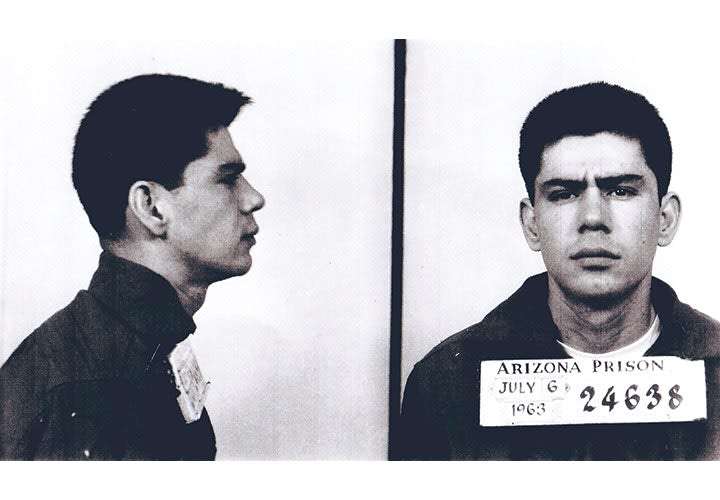Uniformed officers responded, took the necessary reports, and contacted detectives who took the initial report. The next morning, a five-year veteran in the Crimes Against Persons Detail, 27-year-old Detective Carroll Cooley, was assigned to investigate the rape case. Cooley began with a routine interview with the victim, who provided a description of a Mexican or Italian male with dark curly hair combed back, about 25 years old, of average height and build, wearing a white T-shirt and blue jeans. She stated the car was an old four-door sedan, light green with light beige upholstery with vertical stripes, paint brushes on the floor, and the smell of turpentine in the car.
The investigation produced few results. A week passed with no substantial leads or possible suspects. Detectives noted similarity between the victim's description and those of other attacks in Downtown Phoenix.
The victim continued to work at her job, but now had a family member meet her at the bus stop to walk her home. A week after the attack, while waiting to walk the victim home, the male relative saw an old light-colored sedan with a single occupant drive slowly back and forth by the bus stop several times. He noted a license plate number of DFL-317. When the victim stepped off the bus, her relative pointed to the car parked on the dark side street to see if that could be the suspect's car. They walked toward the car and the victim thought it might be the same one, but the driver started the car and sped away. The male relative called the police, who discovered the plate was registered to a 1958 Oldsmobile; however, the relative was sure the car he had seen was a 1953 Packard.
On March 11, Detective Cooley had the MVD pull all their records on all Packards with the license number beginning with the "DFL" prefix. He found one registered in Mesa just one digit off from the number reported by the male relative. The next day Detectives Cooley and Young drove to the address of the registered owner, Twila Hoffman. The home was vacant, but neighbors stated the people who had lived there were Ernesto Miranda and his wife Twila.
They had moved out a few days earlier. The neighbors noted that they used a truck marked "United Produce" to haul their items away. The detectives checked Miranda's name with the Mesa Police Department and learned he matched the suspect's description. They also learned he had a juvenile record of assault with intent to commit rape in 1956; a juvenile arrest in Los Angeles, CA, for robbery in 1957; as well as an arrest and conviction for auto theft in Tennessee in 1959 that resulted in a one-year sentence to federal prison.












